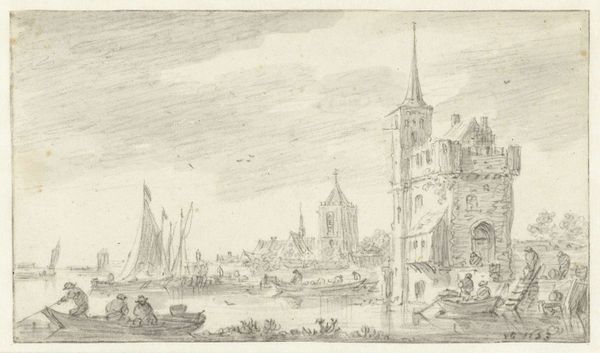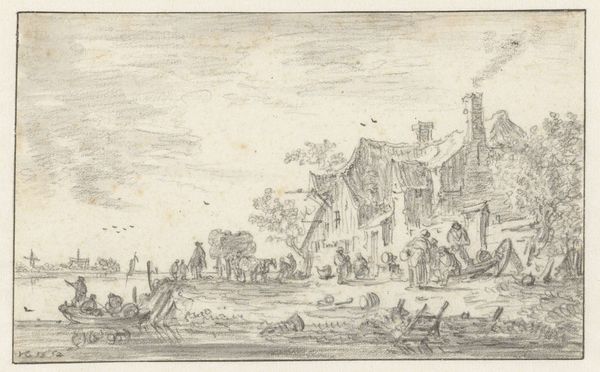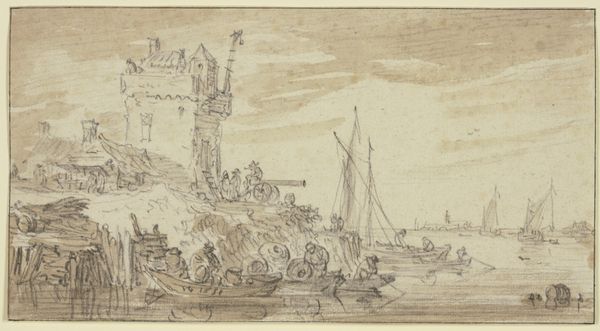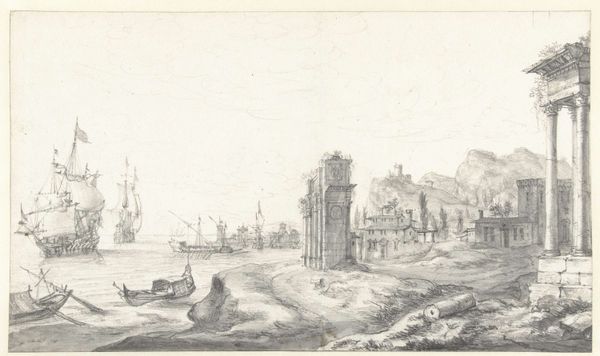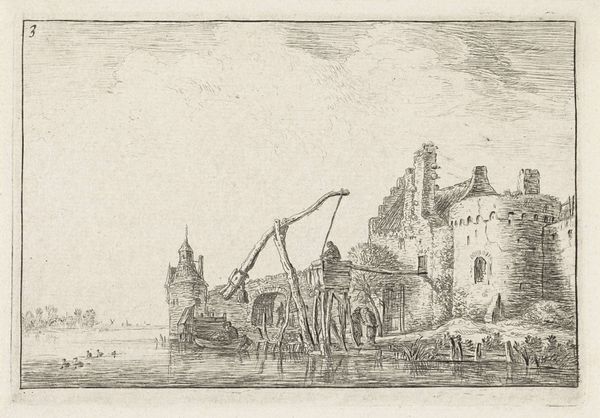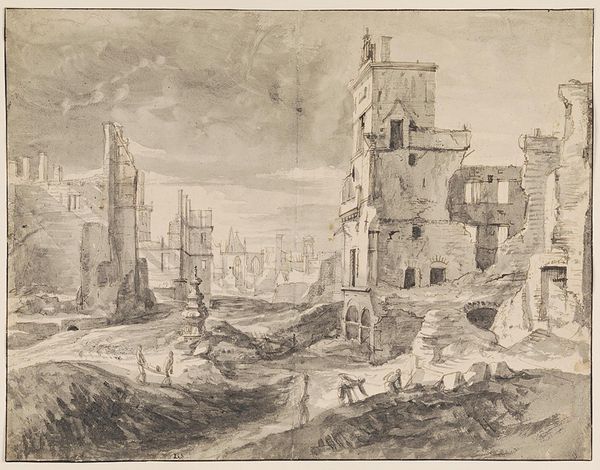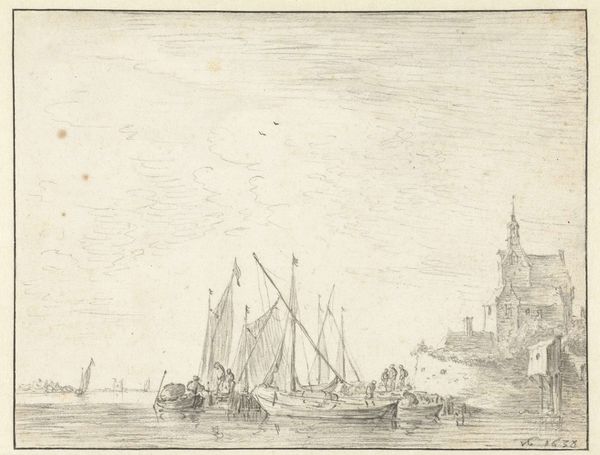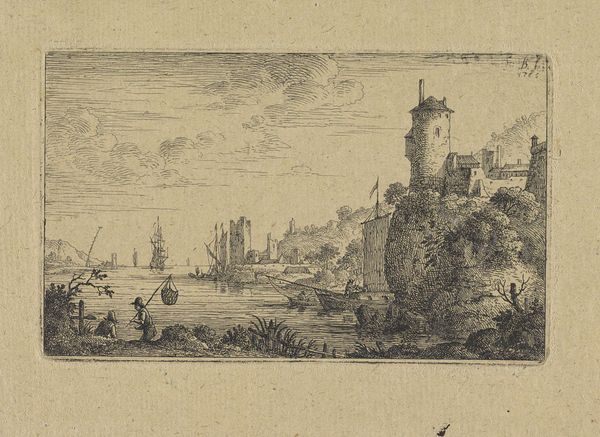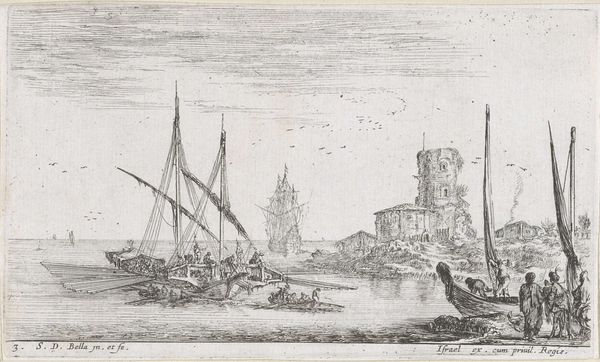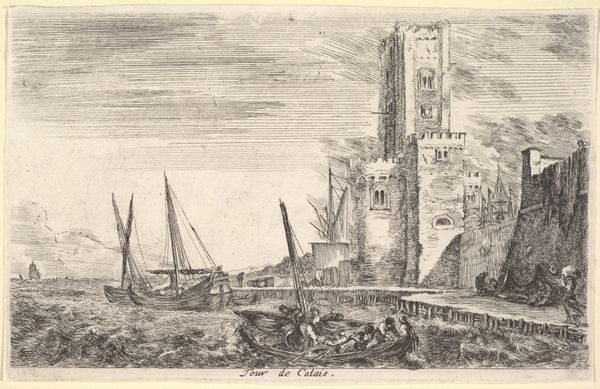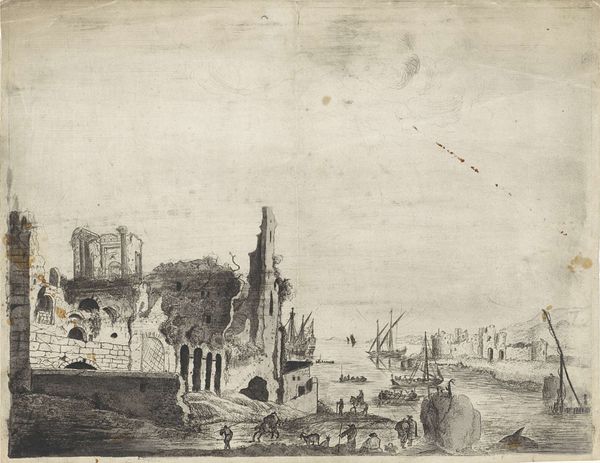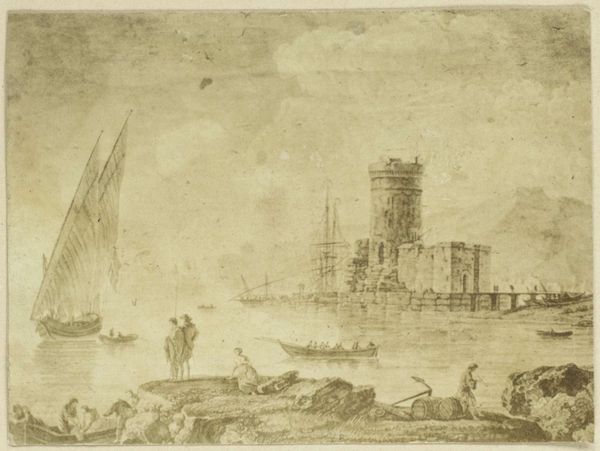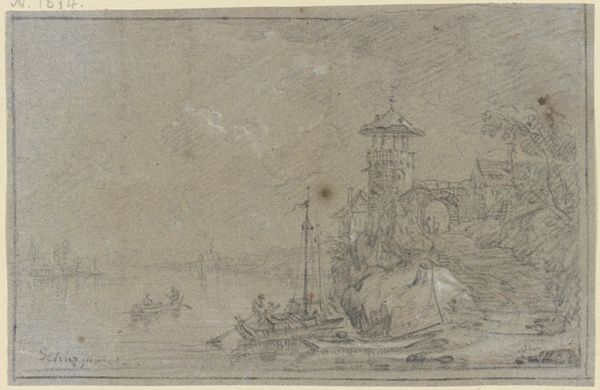
drawing, print, pencil
#
drawing
#
dutch-golden-age
# print
#
landscape
#
pencil
#
cityscape
Dimensions: height 349 mm, width 618 mm
Copyright: Rijks Museum: Open Domain
Curator: This is Jan Abrahamsz. Beerstraten's "Havengezicht in stad aan de Middellandse Zee," created sometime between 1632 and 1666. It's a drawing rendered in pencil and print. What stands out to you immediately? Editor: It's evocative, melancholic, almost as if viewed through a veil. The monochrome palette really amplifies that feeling, doesn’t it? Curator: Absolutely. Look at how Beerstraten utilizes the print medium; the texture created enhances a feeling of age. Consider the access to materials; pencils and printing presses would need skilled laborers and capital investment, indicative of the booming economy of the Dutch Golden Age. The paper, too, speaks of a particular social standing. Editor: True, but it also feels timeless. I'm struck by the classical architecture juxtaposed with the maritime setting. Ruins hint at history, while the ships point towards the future and trade, of course. It makes me imagine faraway lands, spices, and new discoveries... it sparks the traveler in me. Curator: And the social context cannot be ignored, as a growing merchant class depended on this maritime trade; the availability of the paper, the tools needed, all contributed to the rise of artists who represented this commercial and geographic exploration. Editor: There's something incredibly intimate about a pencil drawing. It feels like stepping into the artist’s mind, seeing their hand at work. The precision mixed with loose sketching creates a really vibrant scene, it breathes despite its limitations. It has the stillness of a sepia photograph. Curator: Notice how Beerstraten is using print, maybe multiple runs, to create shades. It almost creates the atmospheric depth we see often in paintings during the Dutch Golden Age, speaking volumes about art crossing defined genre lines and commercial appeal. Editor: It certainly gets me thinking about value—intrinsic artistic merit against market forces of taste and production. Curator: Precisely. Seeing this artwork today is interesting because of how the social structures have shifted yet our aesthetic sense for certain pieces may never disappear. Editor: Beautifully stated. This drawing lingers in my mind. It makes you want to put it away from display as a historical relic and somehow use it on your skin, so as to carry the sea inside you, right? Curator: Agreed. It provides insights into not only artistic ability and its economic factors but also how such seemingly simple compositions can resonate across centuries.
Comments
No comments
Be the first to comment and join the conversation on the ultimate creative platform.
